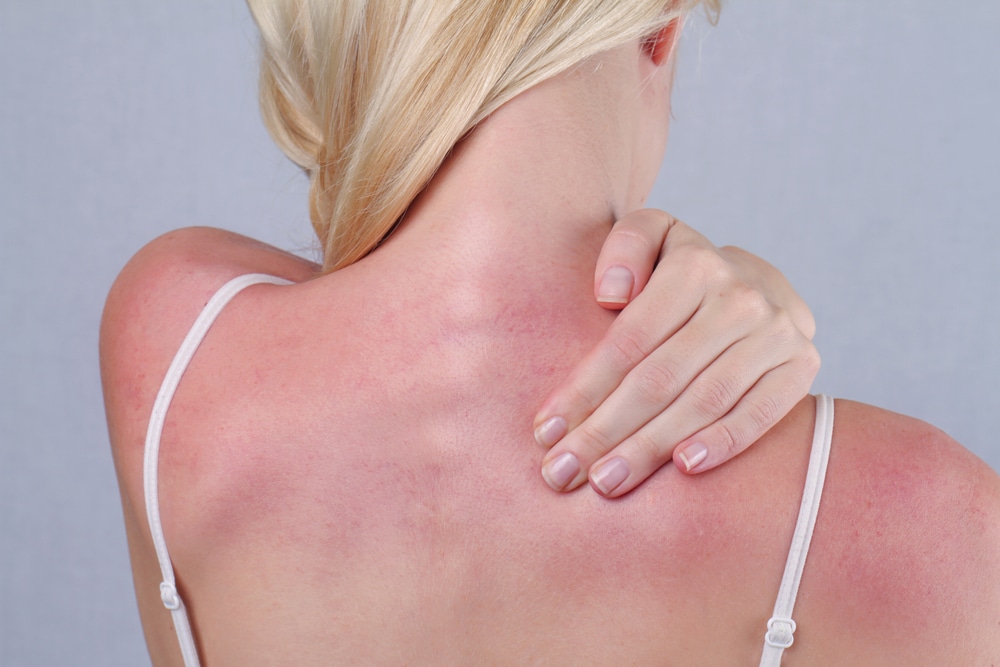People with lighter skin tones may have a higher risk of certain types of skin cancer and sun damage compared to those with darker skin tones. According to the Skin Cancer Foundation, skin type—based on a six-category system called Fitzpatrick skin typing—is a major factor for assessing skin cancer risks over time.
There are a number of reasons why fair skin tones are more sensitive to sunlight and sun damage. Sun protection is essential, but it's not the only piece to the puzzle when it comes to skin cancer prevention.
Fair Skin Tone and Skin Cancer Risks
Skin type is assessed by two major factors: 1) how much pigment you have in your skin and 2) how your skin reacts to sun exposure (whether you easily burn or easily tan).
The primary reason why fair skin is more generally at risk is that the fairer skin you have, the more likely you are to experience sunburns and sun sensitivity.
Why is fair skin less protected against ultraviolet (UV) rays? Individuals with fair skin have less melanin, the pigment that helps protect skin from the sun. Melanin acts as a shield against the harmful oxidative effects of the UV rays that cause changes in the skin, leading to non-melanoma and melanoma skin cancers. In fact, just one severe sunburn in childhood or adolescence may double your risk of developing melanoma later in life.
Skin cancer risk is affected not only by the tone of your skin but also by the color of your hair and eyes. Individuals with red or blonde hair and light eye color are also at an increased risk of sunburns, sun damage, and increased skin cancer risk compared to individuals with brown or black hair and brown eyes.
Early Signs of Skin Cancer in Fair Skin
Skin cancer usually presents in one of three ways in fair skin.
1. Pink pearly papule
If you experience an acne-like growth that is painful, shiny, persistent, and occasionally bleeds, this may be a sign of a non-melanoma skin cancer called basal cell carcinoma. This is the most common type of skin cancer. Individuals with fair skin and light hair and eye color are at a greater risk.
2. Pink-crusted scab or non-healing wound
If you experience a pink-crusted scab or a wound that takes months to heal, it may be a sign of a non-melanoma skin cancer called squamous cell carcinoma. This is the second most common type of skin cancer. These lesions may even initially present as rough sandpaper spots and then progress to thicker crusted growths. They may be painful or bleed without any injury. And if left untreated, they have the potential to spread deeper into the skin.
3. Irregular moles
Individuals with fair skin tend to accumulate tan to light brown moles and freckles. Keep an eye out for a dark brown or black mole that:
- Stands out from your skin
- Has an asymmetrical border
- Changes color (black to red)
- Changes size or shape
These are concerning signs of potential melanoma or precancerous moles. In fair-skinned people, melanomas are more likely to be found on the head and neck area, legs (in women), and upper back (in men). People with dark skin are more likely to develop melanoma on the palms of the hands or soles of the feet.
If you find any moles or papulae, it's important to reach out to your board-certified Dermatologist for evaluation.
Proactive Skin Cancer Prevention
Everyone, no matter their skin tone or type, should have an annual full-skin examination by a Dermatologist to look for concerning moles and growths. A head-to-toe exam includes not only your skin but also your hair and nails.
Though fair skin is more at risk for skin cancer development, it's a common misconception that people with darker skin can't get skin cancer. Any skin type is at risk for both melanoma and non-melanoma cancers. This is especially true if you have a family history of skin cancer, another cancer history, or extensive sun exposure, including sun poisoning and blistering sunburns.
Helpful Tips for Shielding Fair Skin from UV Damage
Daily sunscreen use with SPF 30 or greater is essential to protecting your skin from the sun's harmful rays. When it comes to choosing appropriate sunscreen, look for protection against both UVA and UVB. EltaMD UV Clear Broad-Spectrum SPF 46 contains zinc oxide, which blocks UVA and UVB rays, while hydrating your skin with ingredients such as niacinamide.
When it comes to common mistakes, people often fail to put on enough sunscreen and also to reapply when needed. Whether you're using SPF 30 or 100, it's important to reapply your sunscreen every two hours and after swimming or sweating. In general, it's recommended to apply a nickel-sized amount of sunscreen to your entire face. If you're at the beach or pool, use at least an ounce of sunscreen to cover your whole body.
Sun protection is not only limited to sunscreen. Sun-protective clothing with a UV protection factor rating of 50+ is helpful for blocking both UVA and UVB rays. Avoid extensive sun exposure between the peak hours of 10 a.m. to 4 p.m., and don't forget to protect your skin on cloudy days. Believe it or not, wearing SPF sunscreen on an overcast or winter day is just as important as wearing it on sunny or summer days.
Proactive and diligent sun protection is essential for skin cancer prevention. Understanding your skin tone and how it relates to your individual skin cancer risk is essential for your overall health.
